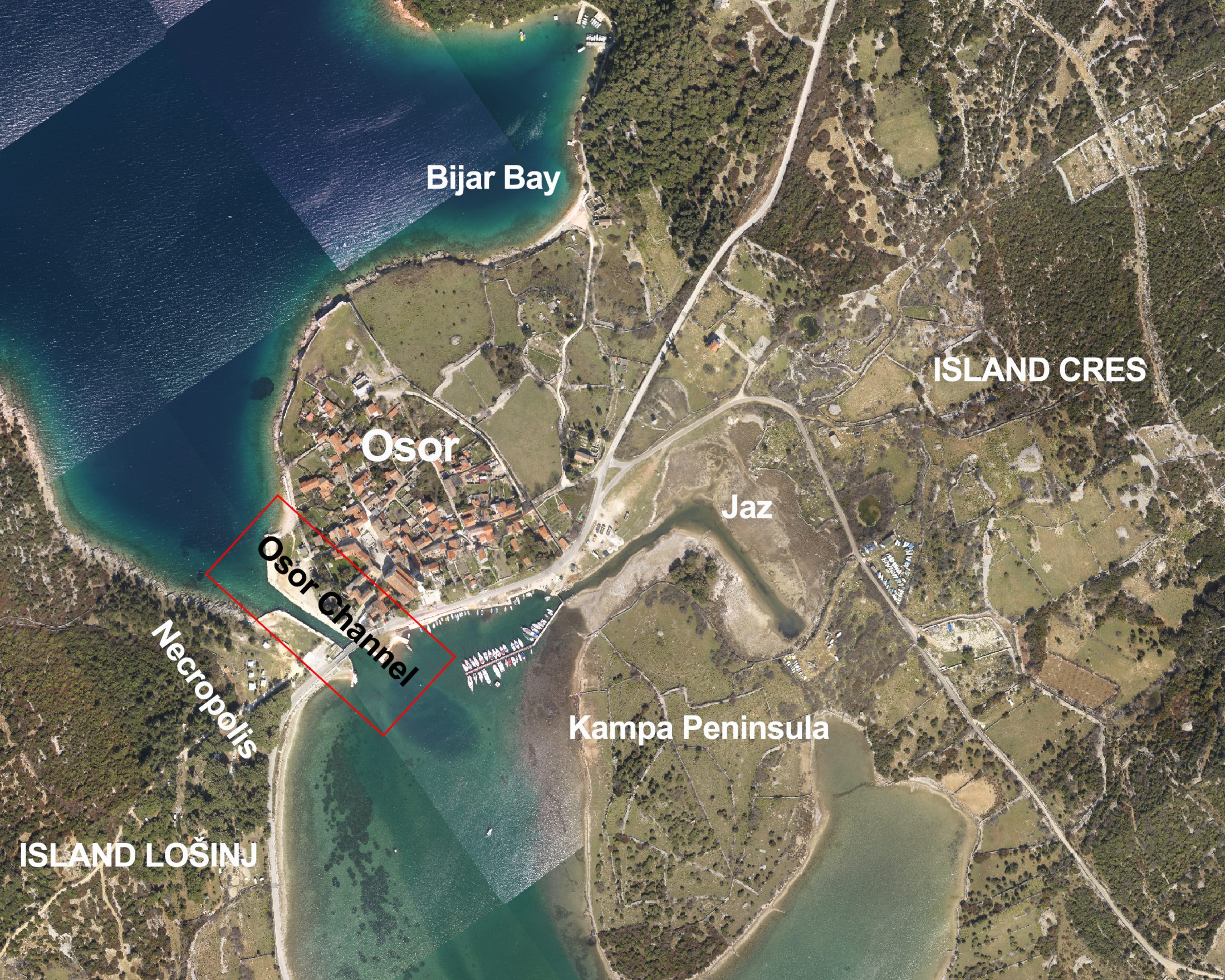Osor beyond the myth
How to analyse an entire city?
A bilateral joint research project (Weave framework), funded by Austrian Science Fund (FWF) and Slovenian Research Agency (ARIS), has taken on the task of creating a state-of-the-art study of a small ancient city employing a variety of disciplines from archaeology, geology and anthropology. Over the three years (2023-2026), more than 20 researchers from Austria, Slovenia, Croatia, and the USA will focus on the question of the role Osor played on the Adriatic shipping routes in the Iron Age and Roman period.
The project sets out on a journey from the Greek mythology and the legend of the Argonauts to a scientific analysis. A century of archaeological interest in Osor has produced a large number of interpretations, which are today often contradictive. The city was a hub for the movement of people and goods along the sea routes between Italy and Greece. The town’s rise is most likely due to its good accessibility, which was enabled by the construction of a navigable channel that separates the islands of Cres and Lošinj to this day. At the same time, hardly any details are known about the coastal setting and the navigability around the city. The date of origin of the Osor Channel has never been investigated, which raises the question of the maritime route by which Osor could be reached in the Bronze and Iron Ages. For the subsequent Roman period, the (current) lack of harbour facilities, shallow water depths and the lack of protected anchorages justify the consideration of the extent to which Roman Osor could fulfil the role of a maritime or military centre. These topics highlight the discrepancy between the history told by archaeological finds, and the history suggested by today´s landscape. The project aims therefore to resolve this contradiction and to revise the cultural history of the city if needed.
Study on material culture in combination with a landscape-based approach and joint underwater and terrestrial archaeological prospection methods will allow a new discussion on a profound base. The discussion will not be limited to the importance of Osor in the matrix of long-distance maritime routes, but will also include topics like land use and settlements outside the city gates or the influence of sea level changes on shipping.

